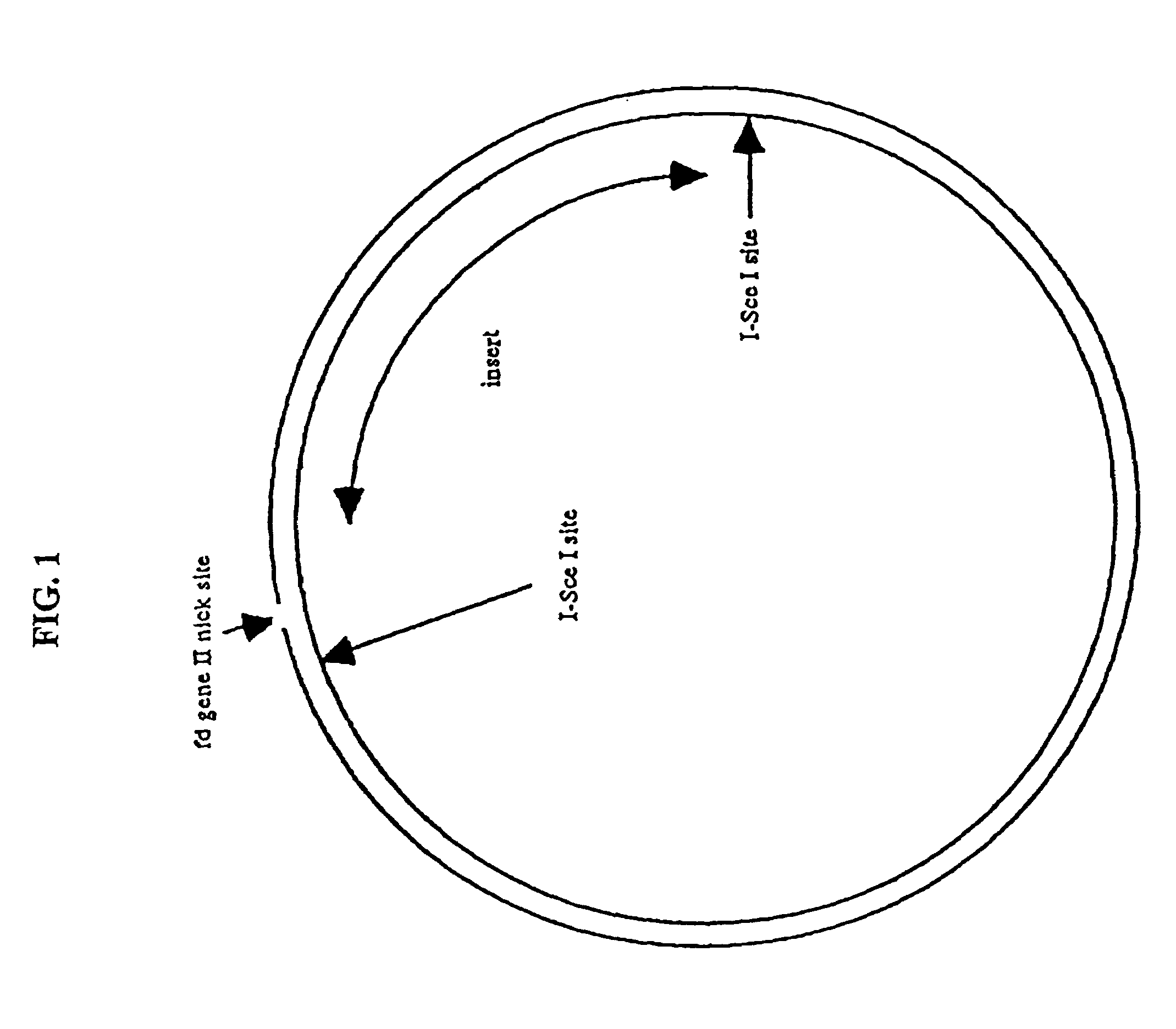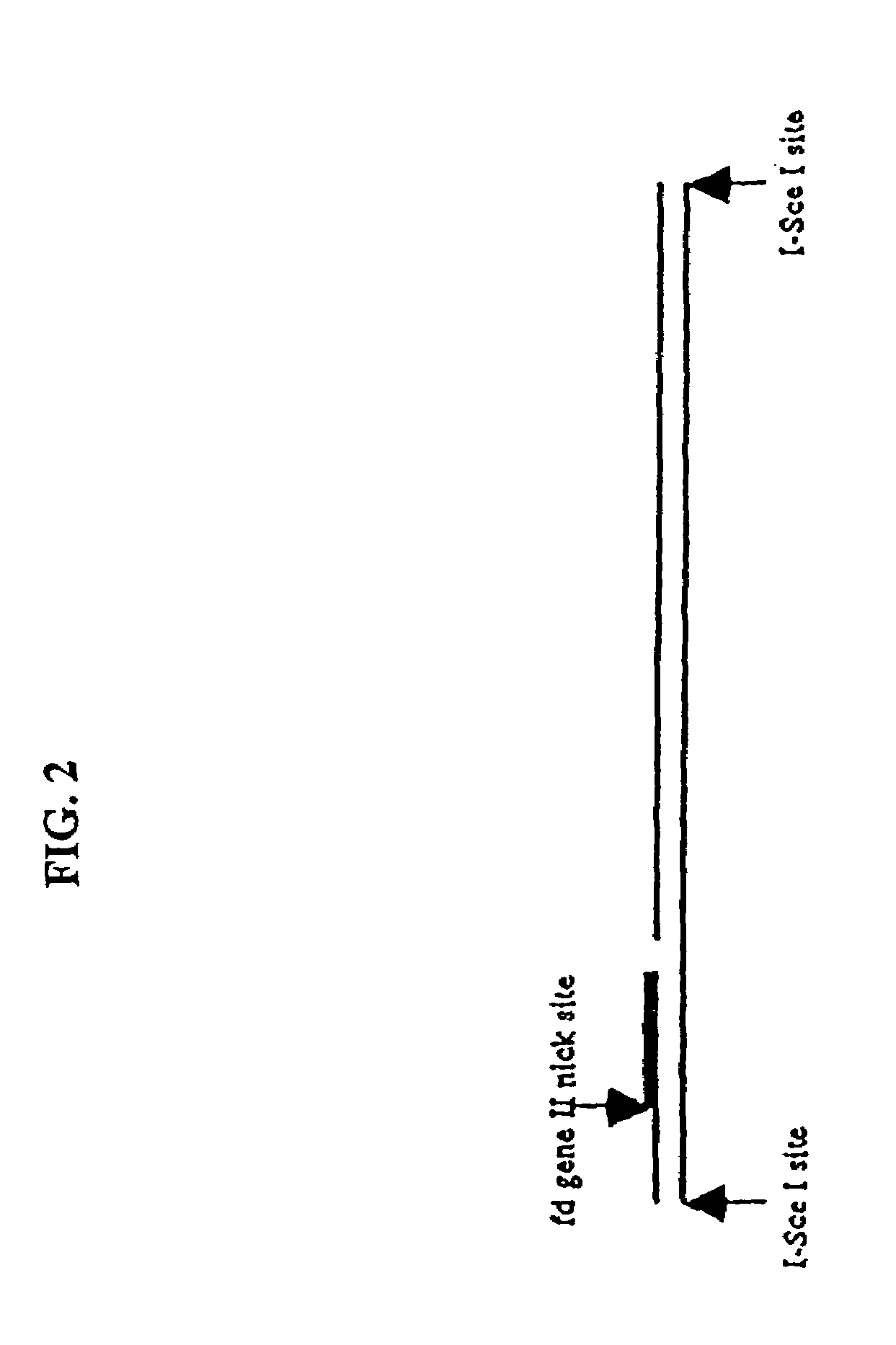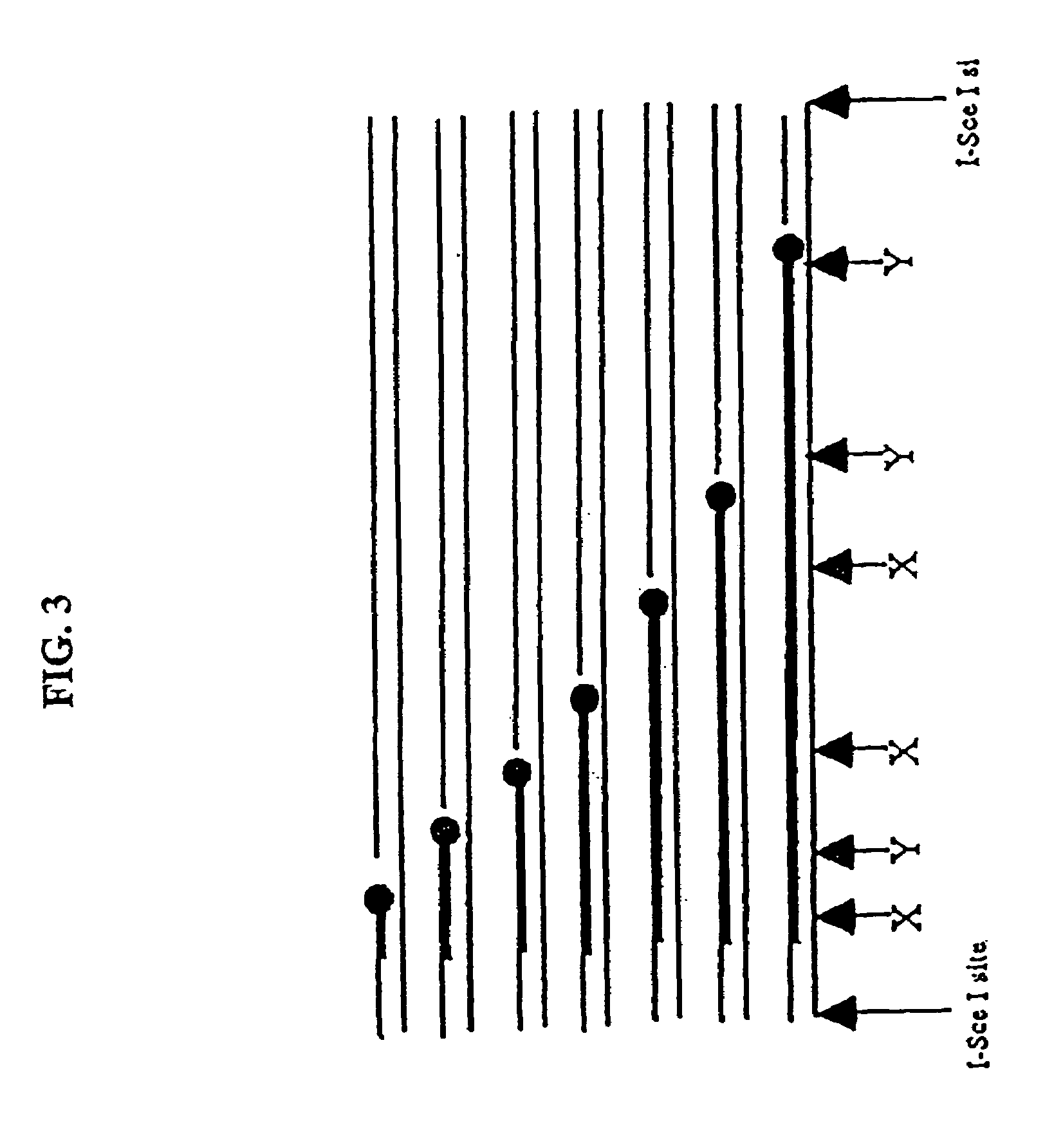Compositions and methods for analysis of nucleic acids
a nucleic acid and composition technology, applied in the field of nucleic acid analysis, can solve the problems of evaluating a limited number of candidate clones, unable to have extensive sequence tagged site resources in most regions of most genomes, and the process is very tedious
- Summary
- Abstract
- Description
- Claims
- Application Information
AI Technical Summary
Benefits of technology
Problems solved by technology
Method used
Image
Examples
example 1
Oligonucleotide Primer Dependent Strand Replacement on Double-Stranded Template Having Single-Stranded Regions Created by Nuclease Digestion
[0525]Telomere DNA is difficult to sequence due to the repetitive sequences involving DNA strands that are either rich in guanine or cytosine. Single-stranded GC rich DNA forms intramolecular and intermolecular secondary structure that causes premature termination of DNA polymerization. In addition, G-rich DNA is able to form non-Watson-Crick hydrogen bonding involving G:G base pairs that are often more stable than Watson-Crick double-stranded DNA. In vitro, single-stranded G-rich telomere DNA can form a variety of non-canonical structures including G-quartets, triple helices and G:G base pairing.
[0526]In this example, the primer-dependent strand replacement method of present invention was used to measure human telomere DNA. FIG. 10 shows the strand replacement approach as applied to the detection and quantitation of G-tails in human chromosomes...
example 2
Oligonucleotide Primer Dependent Strand Replacement on Double-Stranded Template Having Naturally Occurring Single-Stranded Regions
[0532]In this example, the strand replacement method was used to detect naturally occurring single-stranded regions of telomeric DNA. Specifically, the strand replacement method was used to detect G-tails in IMR-90 normal primary human fibroblasts. These telomeres are from fetal lungs and therefore have very long telomeres (approximately 12 kb). High molecular weight (>100 kb) IMR-90 DNA was subjected to the strand replacement reaction and the products were analyzed by I-D alkaline gel electrophoresis.
[0533]Specifically, high molecular weight primary IMR-90 cell DNA was subjected to strand replacement for 5, 10 and 15 min and electrophoresed. Alkaline electrophoresis was performed in 0.8-1% agarose with 40 mM NaOH. The gel was prepared with 50 mM NaCl, and 1 mM EDTA, solidified, and soaked in 2 liters of alkaline electrophoretic buffer (40 mM NaOH and 1 m...
example 3
Strand Replacement Synthesis to Measure the Abundance and Length of Telomere 3′ Overhangs
[0539]In this example, the strand replacement method of the present invention was combined with non-denaturing hybridization to determine the average lengths of 3′ tails in humans. Hinf I digested human DNA, plasmid constructs with 100 b, 170b and 220 b overhangs, or a nearly equimolar (in terms of telomere ends) mixture of human and plasmid DNA were hybridized at 50° C. with 1 nM32P-TelC in 20-30 μl of hybridization buffer (50 mM NaCl, 1 mM EDTA and 50 mM Tris-HCl, pH 8.0) for 12-16 h. Some of the samples were subjected to strand replacement (100 mM dNTP, 5 units Taq DNA polymerase; 10 min at 55 ° C.), then all samples were electrophoresed on a 1% agarose / TAE gel, electroblotted onto a nylon membrane for 16 h and quantitated. The absolute telomere molarity of the IMR90 / P04 DNA solution was approximated by spectrophotometry. The molarities of plasmid constructs and telomeres from different human...
PUM
| Property | Measurement | Unit |
|---|---|---|
| temperature | aaaaa | aaaaa |
| temperature | aaaaa | aaaaa |
| line-widths | aaaaa | aaaaa |
Abstract
Description
Claims
Application Information
 Login to View More
Login to View More - R&D
- Intellectual Property
- Life Sciences
- Materials
- Tech Scout
- Unparalleled Data Quality
- Higher Quality Content
- 60% Fewer Hallucinations
Browse by: Latest US Patents, China's latest patents, Technical Efficacy Thesaurus, Application Domain, Technology Topic, Popular Technical Reports.
© 2025 PatSnap. All rights reserved.Legal|Privacy policy|Modern Slavery Act Transparency Statement|Sitemap|About US| Contact US: help@patsnap.com



